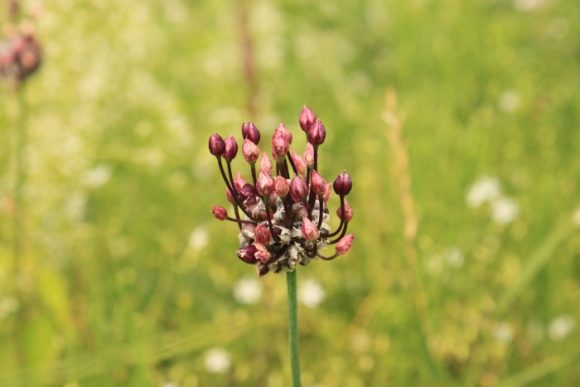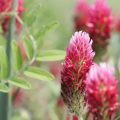- The Miraculous Shiny Bush Plant - January 18, 2021
- Colorful, Edible and Medicinal Celosia - January 10, 2021
- Radish, a Nutritional Power House - December 19, 2020
Wild garlic, also known as field garlic, crow garlic and botanically referred to as allium vineale, is a grass-like flowering plant, closely related to onions more than garlic. It is native to Europe, North-western Africa and the western part of Asia. The plant was probably introduced to North America as an alternative to onions and garlic but soon escaped into the wild and is now considered a weed in some states.
[Note: The Right Flowers is not a medical site. Knowledge of and information about the therapeutic benefits and applications of flowers, while known through the ages, does not constitute medical advice. If you are having health issues, you should consult with a physician.]
The plant is highly tolerant and can thrive in the face of drastic weather changes. It can also grow in poorly-structured soils where most plants would not survive which explains why it is considered an invasive weed.
Wild garlic has smooth, erect, slender and rounded stems. Its basal leaves emerge from the bulb while stem leaves grow around the lower half of the stem and have a grass-like blade.
The plant flowers from June to July, bringing forth pretty flowers or aerial bulblets in dense spherical clusters perched at the top of the stems. The flowers are purple, pink, white or green and have six tiny petals. In some instances, the plant produces bulblets instead of flowers which emerge as tiny, teardrop-shaped bulblets with green leaves resembling miniature tails.
Wild garlic is a highly sought out culinary herb and can be easily found by foraging or buying from the farmers’ market. Apart from its culinary use, wild garlic has medicinal qualities. Actually, the whole herb contains carminative, diuretic, hypotensive, antiasthmatic, carthatic and stimulative properties. It has sufficient levels of folic acid, thiamin, lutein, niacin, riboflavin, and pyridoxine.
Just like other members of this species, wild garlic contains many sulfur compounds including allicin, a light yellow fluid that gives all members of amaryllis family the pungent smell. When eaten regularly, they help in managing blood cholesterol and tonify the circulatory and digestive system.
Good for your brain and heart
When consumed raw or cooked, wild garlic releases nitric oxide which reduces stiffness in the blood vessels and helps in managing blood pressure. It is ideal for preventing the formation of clots in blood vessels which is critical for reducing the risk of cardiovascular conditions including stroke.
Bone health
Wild garlic has high levels of vitamin K, an important component in bone formation. In addition, vitamin K is known to reduce neural damage in the brain which is important in the treatment of Alzheimer’s disease.
In spite of its invasive nature and pungent smell, wild garlic is packed with nutrients and medicinal compounds that are good for the optimal functioning of your body.





